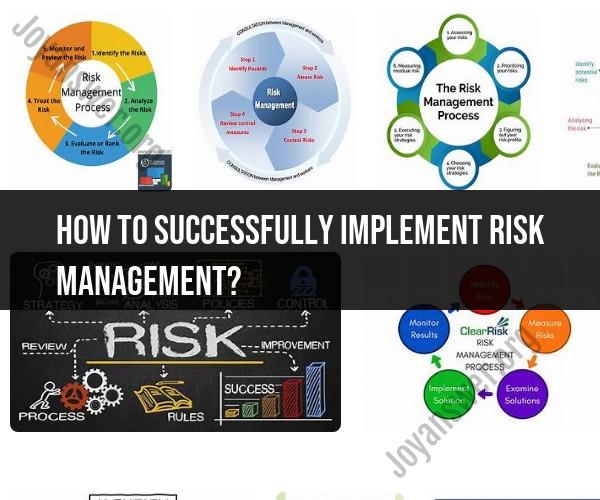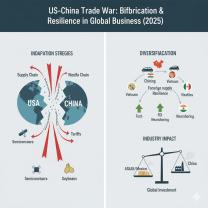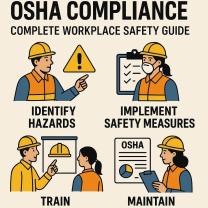How to successfully implement risk management?
Successfully implementing risk management involves a systematic and strategic approach to identify, assess, mitigate, and monitor risks that could affect an organization's objectives. Here are key strategies to help you achieve effective risk management:
Establish a Risk Management Framework:
- Define the scope and objectives of your risk management process.
- Develop a risk management policy that outlines roles, responsibilities, and reporting structures.
- Identify the key stakeholders involved in risk management.
Risk Identification:
- Identify potential risks that could impact your organization's objectives. Use techniques such as brainstorming, checklists, and historical data analysis.
- Categorize risks into different types, such as strategic, financial, operational, and compliance risks.
Risk Assessment:
- Assess the likelihood and impact of identified risks. You can use qualitative, quantitative, or semi-quantitative methods.
- Prioritize risks based on their potential impact and likelihood, creating a risk heat map or risk matrix.
Risk Mitigation and Control:
- Develop risk mitigation strategies to reduce the impact or likelihood of high-priority risks. These strategies may include risk avoidance, risk reduction, risk transfer, or risk acceptance.
- Create action plans with specific tasks, timelines, and responsible individuals or teams to implement risk mitigation measures.
- Establish internal controls and procedures to monitor and manage risks on an ongoing basis.
Risk Communication and Reporting:
- Implement a robust reporting mechanism to communicate risk-related information to key stakeholders, including senior management and the board of directors.
- Use clear and concise reporting formats that highlight risk status, trends, and emerging risks.
- Encourage open communication and feedback regarding risks at all levels of the organization.
Risk Culture and Awareness:
- Foster a risk-aware culture within the organization by promoting risk management as a shared responsibility.
- Provide training and education to employees to enhance their understanding of risks and their role in risk mitigation.
- Encourage a proactive approach to risk identification and reporting.
Monitoring and Review:
- Continuously monitor the effectiveness of risk mitigation measures and control activities.
- Regularly review and update the risk assessment and mitigation plans to account for changing circumstances and emerging risks.
- Conduct periodic risk assessments and internal audits to assess the overall effectiveness of the risk management process.
Integration with Strategic Planning:
- Align risk management with the organization's strategic planning process. Ensure that risk considerations are integrated into decision-making.
- Assess the impact of risks on strategic objectives and adjust strategies accordingly.
Technology and Tools:
- Utilize risk management software and tools to streamline the risk assessment and reporting process.
- Leverage data analytics and modeling to enhance risk assessment and decision-making.
External Factors and Regulatory Compliance:
- Stay informed about external factors, including industry trends, economic conditions, and regulatory changes that could impact your organization.
- Ensure compliance with relevant laws, regulations, and industry standards.
Scenario Analysis and Stress Testing:
- Conduct scenario analysis and stress testing to assess how different risk scenarios could impact your organization.
- Use scenario analysis to evaluate the robustness of your risk mitigation strategies.
Continuous Improvement:
- Encourage a culture of continuous improvement in risk management by learning from past experiences and adjusting your approach accordingly.
- Periodically review and update your risk management framework to reflect evolving best practices.
Successful risk management is an ongoing and dynamic process that requires commitment, collaboration, and adaptability. By implementing these strategies and maintaining a strong focus on risk awareness and mitigation, organizations can enhance their ability to navigate uncertainty and achieve their objectives while minimizing potential setbacks.
Implementing an Effective Risk Management Framework
To implement an effective risk management framework, organizations should follow these steps:
- Identify and assess risks: The first step is to identify all of the potential risks that could affect the organization. This can be done through a variety of methods, such as brainstorming, risk workshops, and surveys. Once the risks have been identified, they need to be assessed to determine their likelihood and impact.
- Develop and implement risk treatment strategies: Once the risks have been assessed, the organization needs to develop and implement risk treatment strategies. These strategies can include avoiding the risk, reducing the risk, transferring the risk, or accepting the risk.
- Monitor and review the risk management framework: The risk management framework should be monitored and reviewed on a regular basis to ensure that it is effective and up-to-date. This includes monitoring changes in the organization's environment and identifying new risks.
Key Components of Successful Enterprise Risk Management
The key components of successful enterprise risk management include:
- Executive support: Risk management must be supported by the organization's senior management. This means that executives must be committed to risk management and provide the necessary resources.
- Risk culture: The organization must have a risk culture that promotes open and honest communication about risk. This means that employees should feel comfortable reporting risks and raising concerns.
- Integrated approach: Risk management should be integrated into all aspects of the organization's operations. This means that risk management should be considered in strategic planning, decision-making, and performance management.
- Continuous improvement: Risk management should be a continuous process. This means that the organization should regularly review and improve its risk management framework.
Steps for Developing a Robust Risk Management Process
To develop a robust risk management process, organizations should follow these steps:
- Establish a risk management team: The first step is to establish a risk management team. This team should be responsible for developing and implementing the risk management framework.
- Identify risks: The risk management team needs to identify all of the potential risks that could affect the organization. This can be done through a variety of methods, such as brainstorming, risk workshops, and surveys.
- Assess risks: Once the risks have been identified, they need to be assessed to determine their likelihood and impact.
- Develop and implement risk treatment strategies: The risk management team needs to develop and implement risk treatment strategies. These strategies can include avoiding the risk, reducing the risk, transferring the risk, or accepting the risk.
- Monitor and review the risk management process: The risk management process should be monitored and reviewed on a regular basis to ensure that it is effective and up-to-date. This includes monitoring changes in the organization's environment and identifying new risks.
By following these steps, organizations can develop and implement an effective risk management framework that will help them to manage and mitigate risk.












